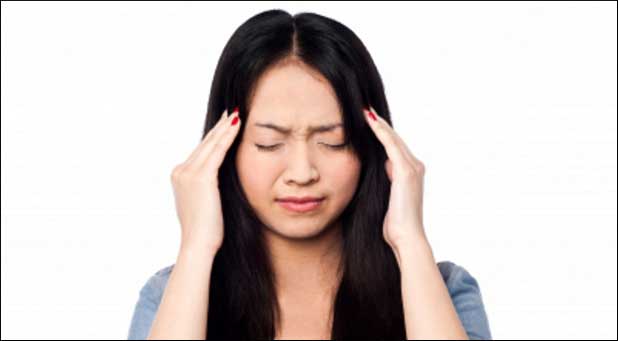Chances are you are exposed to indoor air pollution in the house where you live or the building where you work. When was the last time you were exposed to fresh paint, new carpets, a copier or a laser printer?
What about cleaning products, nail polish remover or other solvents? How about a big flat-screen TV, which can give off an odor of slowly cooking plastic?
Let’s face it: These things aren’t making the air we breathe any cleaner or safer.
Quite the opposite. Many of the products we use every day are giving off toxins that we then breathe in or absorb through our skin.
With 90 percent of our time spent indoors, there is a good chance that indoor air pollution impacts your health for the worse.
In fact, if the building in which you live, work or study is a sick building, it could very well be making you sick too—and you probably don’t even realize what is making you ill.
Do you experience:
- Eye or ear irritation
- Stuffy nose
- Headache
- Chest tightness
- Impaired memory or concentration
- Dizzyness
- Nausea
- Itching
- Skin rash
- Shortness of breath
These are just some of the symptoms of sick-building syndrome that I outline in my book Power Healing. The source of the toxic indoor air is discovered in about a quarter of the cases, but in most cases no single source of environmental exposure can be identified.
Of course, if you or neighbors have a woodstove or fireplace, you can easily smell the source. Learn the results of a fascinating new study on indoor air pollution: “Air Filters Cut Heart Risks from Pollution.”
A survey of 9,000 office workers in Europe found that 50 to 80 percent of them had symptoms typical of sick-building syndrome. In the U.S., it is estimated that up to 25 million workers have building-related illnesses at any given time.
What are the main sources of toxins?
The first category is volatile organic compounds (VOCs).
VOCs are gases that come from:
- Paint
- Adhesives
- Solvents
- Cleaning solutions
- Carpeting
- Building materials
- Copy machines
- Laser printers
- Many other products
Exposure to VOCs can cause headache, fatigue and difficulty concentrating. Samples of air from buildings with sick-building syndrome and without have established the connection between VOCs and illness.
And any exposure to tobacco smoke is hazardous to your health.
While the problem of sick building syndrome has gotten more attention recently, it has been a recognized health issue for many years.
In 1998, the groundbreaking book Chemical Exposures: Low Levels and High Stakes, 2nd edition, was published, which examined in great detail the vast amount of symptoms and illnesses caused by toxic exposures. This book was written by Nicholas A. Ashford, Ph.D., J.D., professor of technology and policy at MIT, and Claudia Miller, M.D., M.S., professor in environmental and occupational medicine the University of Texas Health Science Center at San Antonio.
When Ashford and Miller wrote their book, sick-building syndrome was commonly called tight-building syndrome, which came from the effort to insulate and seal building for energy conservation.
Old buildings got tightened with storm windows and sealer, while new buildings went up without any opening windows at all. These steps effectively reduced the amount of fresh air that is brought into buildings.
The authors concluded, “Increased sources of indoor air pollution, coupled with decreased fresh make-up air, have transformed the indoor environment.”
So, what was the effect on health?
Groups With Chemical Exposure Sensitivity
Tighter buildings, along with the rise in synthetic chemicals and consumer products, have led to people having trouble with low levels of exposure, according to Ashford and Miller, who observe that the types of people affected are remarkably diverse:
1. Industrial workers
2. Office workers, school children and others who occupy “tight buildings”
3. People living where air or water are contaminated by chemicals
4. People with exposure to chemicals in pesticides, indoor air, consumer products and drugs
From hard-hat wearing industrial workers to school children and from office workers to farmers exposed to pesticides, these groups seem to have little in common.
Yet people from each of these groups have been identified as having trouble handling chemical exposures after experiencing such exposures in the past.
Ideas for Limiting Exposure
Here are a few quick ideas for reducing exposures from common sources:
1. Paint. For your home or office, look for non-VOC paint. Stick with white, because adding a color can add VOCs.
2. Laser printers and laser copy machines. Use an inkjet printer or copier instead. There should be no odor when using these types of machines.
3. Household cleaning products. Use all-natural and nontoxic cleaning products. I use baking soda and water for most cleaning and vinegar diluted with water for windows, mirrors and glass.
4. New clothing. Wash new clothes well before wearing them to soak out some of the dyes and bleach that are used in manufacturing. Avoid scented laundry detergent, fabric softener and dryer sheet products; these increase your exposure to chemicals. Get unscented laundry detergent instead.
5. Stale indoor air. With airtight buildings and homes, toxins can build up. Get outside for some fresh air from time to time.
Dr. Leo Galland is a board-certified internist who is internationally recognized as a leader in nutritional medicine. He has written several dozen scientific papers, textbook chapters, and three highly acclaimed popular books, The Fat Resistance Diet, Power Healing and Superimmunity for Kids.
For the original article, visit cbnnews.com.














































